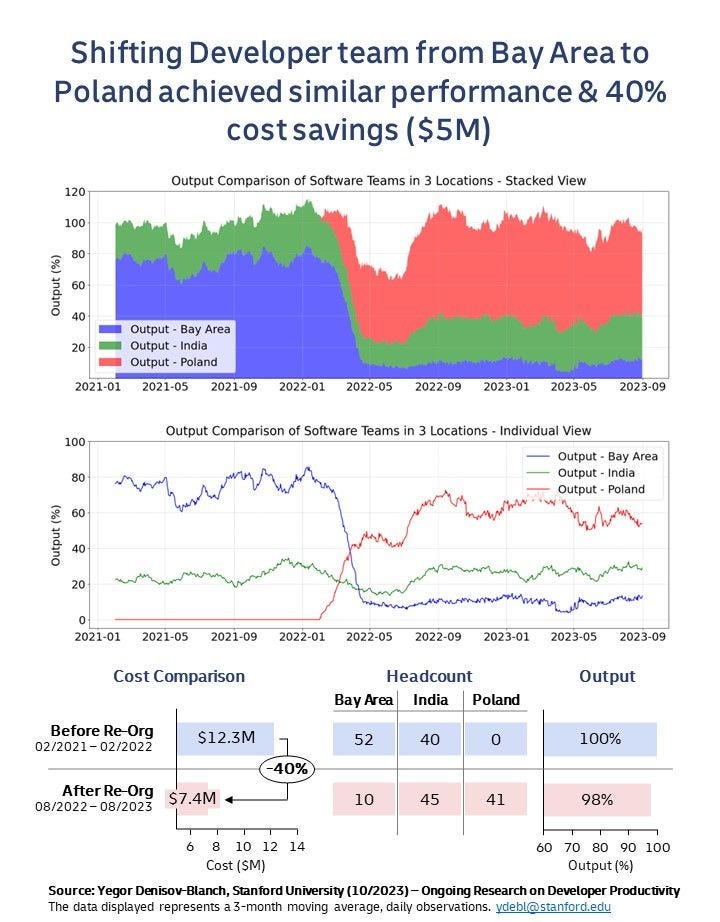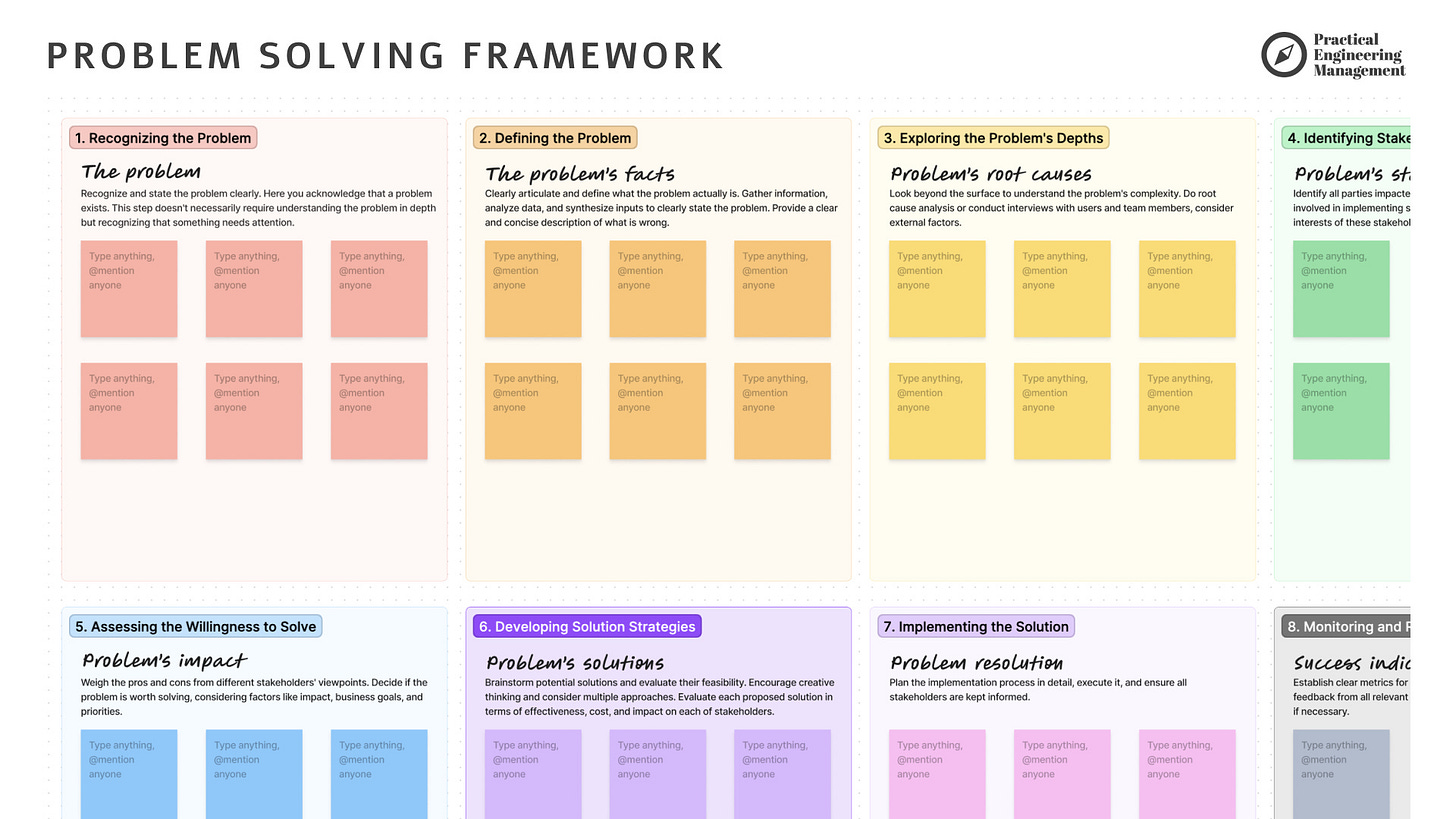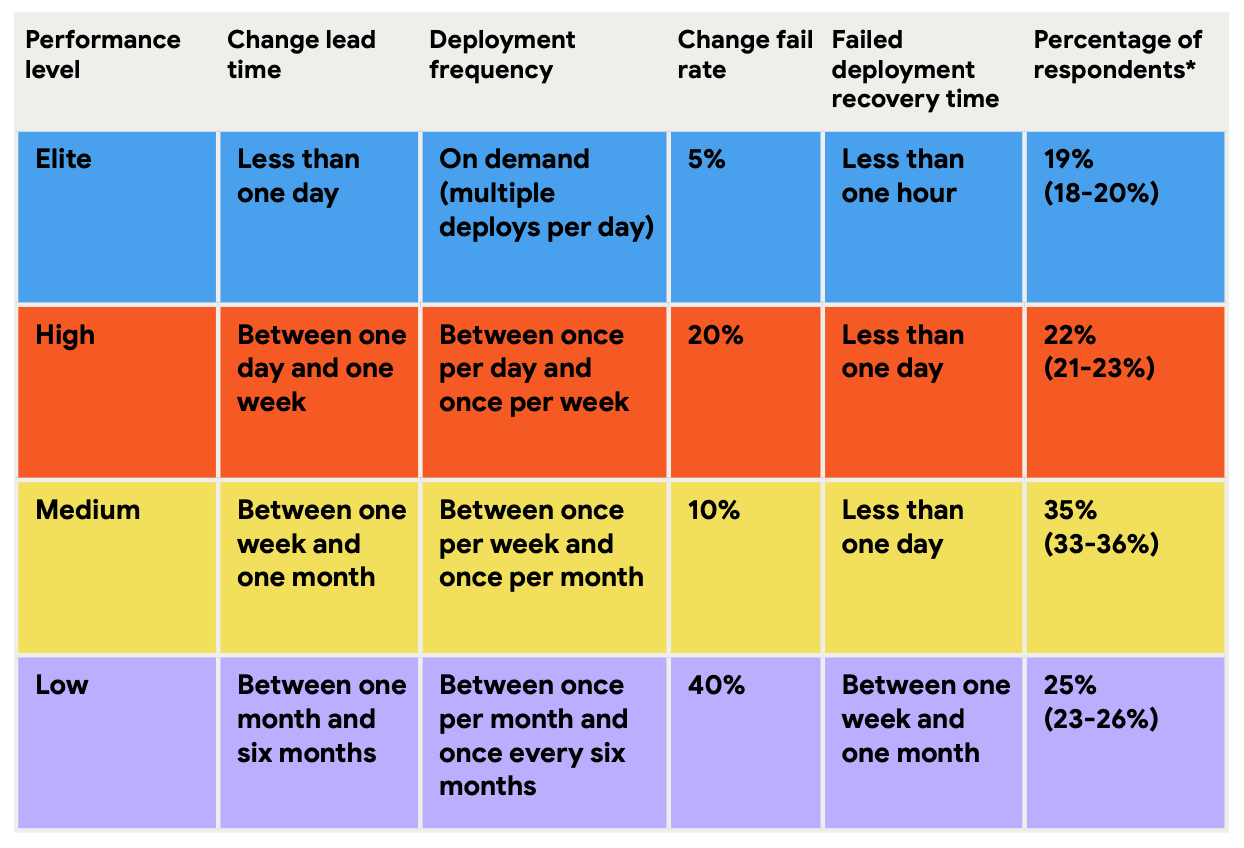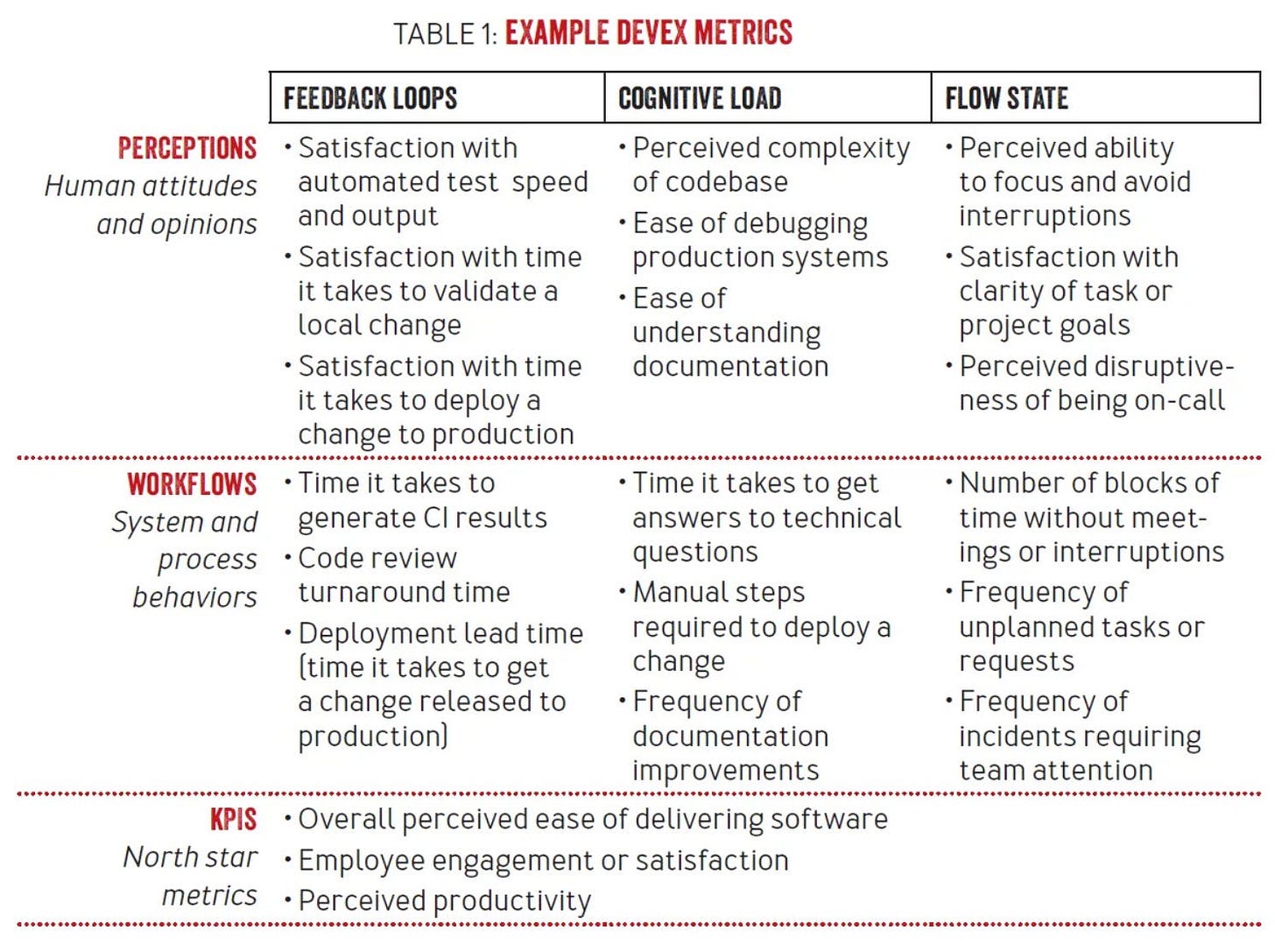The Engineering Leader of 2025 and Beyond
How to Prepare for Tomorrow as an Engineering Leader – Part 2
Welcome to the second part of this series, in which we explore how to better prepare for 2025 as engineering leaders.
In the first part, we examined the profiles of workers who are likely to lose their jobs in the coming year. Being in the IT sector doesn't automatically guarantee success anymore. Programming or software testing is no longer secret knowledge, and many basic skills can be easily replaced by tools or services such as generative AI, modern IDEs, or paid platforms and services. If that weren’t enough, global market dynamics enable companies to outsource work to regions with lower labor costs, making it easier to find cheaper alternatives for software development.
Today, I want to go beyond securing our current jobs. Based on what we observed in 2024, let's explore how to stay ahead of global trends and become high-performing engineering leaders in 2025 and beyond.
The Key Challenges of 2025
Common wisdom says that a good engineering leader starts by defining the problem rather than jumping straight to a solution, right?
Here are some of the key challenges to anticipate in 2025.
Generative AI
No matter if you're excited about or tired of reading about AI, the “intelligent” solutions are here to stay. But here's the thing: buying a $20 license for ChatGPT or Copilot code completion is something anyone can and likely will do. If this is your only strategy, you'll have no advantage in 2025.
Actually, this approach can threaten you and your team(s). The amount of data generated will likely be the highest in our history. Without human oversight, it will soon become noisy and difficult to manage.
For me, the initial excitement over text generation has turned into a new challenge in people management. Anyone can write a grammatically correct, tone-adjusted, and compelling message today.
The result? Engineering leaders receive one page of feedback about being “such an inspiring and impactful leader. I truly enjoy working with you and have learned so much under your guidance. Your leadership style brings out the best in me and the team, and I’m excited about what we can achieve together in the future.” 🤢
If you run performance review sessions, anonymous surveys, or other feedback forms, be prepared for fluff in messages you haven't seen before.
The DORA 2024 report emphasizes that AI is not a panacea and can even negatively impact delivery performance without proper focus on software engineering fundamentals, such as small pull-requests, robust testing, or the right architecture.
Like with the mentioned feedback sessions, anyone today can generate another ten unit tests or 100 lines of code covering even more edge cases. You can easily imagine how this will affect batch sizes of changes and code review processes.
So, am I skeptical about the future of AI in software engineering? Absolutely not. Personally, I have saved hundreds of hours of work and generated content I would never have created on my own - especially projects written in languages or frameworks I'm not an expert in. However, scaling that from individuals to teams or entire organizations won't work without guidance and supervision.
In 2025, leaders must develop solid strategies for integrating AI tools into their workflows. This includes understanding how to leverage AI for automation, code generation, and data analysis while managing the implications for team dynamics and productivity.
By productivity, I mean not how much output you create but how much of added value you produce.
What You Can Do As an Engineering Leader
While AI is a powerful tool, human oversight—including a strong understanding of software engineering and the product landscape—remains critical to ensure generated code's quality, scalability, and maintainability. As a leader, your responsibilities include:
Guiding Strategic Decisions: While AI can assist with tactical coding, strategic decisions like technology choices, setting objectives, and choosing architectural patterns still need human judgment. You can use the Engineering Strategy Framework, among others.
Maintaining Codebase Health: Ensure the overall codebase remains maintainable and scalable. Leaders must set standards, conduct code reviews, and foster a culture of code quality, which requires a practical understanding of software engineering best practices. For hints, check Non-Functional Requirements or Intro to SLA, SLO, and SLI.
Proactively Managing Complexity: According to Tesler’s Law, complexity can’t be added or removed, only shifted elsewhere. Our job as engineering leaders is to manage it proactively by focusing on software evolvability, breaking down complexity, or automating. For inspiration, see Managing Complexity of Software Systems.
Building a Sense of Ownership: If people are expected to own something and take responsibility for future iterations and overall commercial success, they’ll care much more about the code they produce. Creating a culture of “You Build It, You Run It” can be the key to long-term success.
Workforce Dynamics and Globalization
AI and technological advancements are not the only things we should focus on as engineering leaders. Several emerging challenges related to workforce dynamics and globalization—particularly those related to managing Gen Z and the rise of remote work—also need our attention.
Gen-Z and Recent Workforce Trends
Gen-Z's perspective on work differs from that of previous generations, such as millennials. As a representative of the latter group, with more than a decade of experience, I’ve noticed these new trends in today’s workforce:
Less loyal to employers, frequently changing jobs.
Expect growth and training opportunities provided and paid for by the company.
Prioritize compensation over titles and expect suitable raises with increased responsibilities.
Prefer remote work, finding the office environment distracting, and only useful for occasional social interaction or brainstorming.
Value transparency from their employers, particularly regarding the company's mission, performance, and compensation practices.
Appreciate practical benefits that support their work and well-being, such as professional development budgets and quality equipment, rather than superficial perks.
Demand work-life balance, expecting time off when sick, after work hours, and during weekends, with clear compensation for any on-call duties.
To be clear, these expectations are becoming a global trend—not limited to Gen Z. As a Millennial who worked very differently ten years ago (growing and learning after hours, being hyped by corporate missions, working more than I had to, and not asking for frequent raises), I also appreciate this new landscape of fairness and work-life balance.
When managing the recent workforce, it’s more important than ever to build close relationships with your teammates. This can be achieved through an open feedback culture, a safe and transparent environment, and focused 1:1s that foster individual connections.
For more, explore How to Manage Gen-Z.
Remote-First and Globalization
The rise of remote work further complicates these dynamics. While some companies are pushing for a return to the office, software engineering is inherently “remote-native,” given that the tools, solutions, and communication are already online.
Globalization adds another layer, as companies can hire from a global talent pool, potentially leading to cost savings. However, this also means that engineers can work for higher-paying companies overseas, creating a more competitive market for talent.

Whether your company is office-first, hybrid, or fully remote, learning the skills of distributed team management should be your go-to growth area as an engineering leader. In the worst case, if changing your organization’s culture is out of reach, you’ll still be a qualified employee for the global market—no longer constrained by local compensation levels or location.
In the best case, you will unleash the potential of center-out leadership, which reduces cognitive overload and leverages your team’s collective intelligence.
How do you start becoming a remote-native?
Reduce unnecessary communication by minimizing dependencies between teams to support asynchronous and autonomous work. This can be achieved by structuring teams around clear domain ownership, adopting distributed architecture (microservices, microfrontends, or modular monoliths), and encouraging clear documentation of work, including APIs and guidelines.
Establish clear standards and guidelines to drive “aligned autonomy.” This involves setting technical standards and non-functional requirements, as well as defining and documenting principles and guidelines for development practices.
Build collective intelligence by inviting team contributions to these standards and guidelines, fostering knowledge sharing (through engineering guilds, internal talks), and creating accessible, well-maintained documentation (e.g., Lightweight ADR or Lightweight RFCs).
Prioritize feedback and gather information proactively. Remote leadership requires active efforts to monitor team morale and culture, and to identify potential issues. Use various feedback channels, including surveys, 360-degree feedback, meeting assessments, retrospectives, and post-mortems. Conduct regular 1:1s to build relationships and provide personalized feedback.
For a full overview of practical implementations behind these hints, I recommend checking How to Build Remote-First Culture.
Product Engineering, Not Software Engineering
Another important trend to follow in 2025 is the shift in success metrics for engineering teams. While technical analysis—like codebase growth, number of microservices, or test coverage—can give some insight into our tech stack, it usually tells us nothing about actual productivity.
The bare minimum today is the core DORA metrics:
Change Lead Time
Deployment Frequency
Change Fail Rate
Failed Deployment Recovery Time
However, tracked alone, these only tell us how effective our “factory” is compared to other tech organizations around the world.
According to the book Transformed, only 10-30 percent of features pushed by companies bring positive results. If we truly want to improve our engineering team’s productivity, we shouldn’t just ensure we build things quickly—we must also ensure we build the right things.
DORA widely describes the concept of user-centrism, in which the engineering team makes the user the focal point of development processes. Customer feedback shapes feature prioritization and validates product assumptions.
According to DORA, a user-centered approach gives developers a clear sense of purpose by ensuring their work meets actual user needs. This increases job satisfaction and reduces burnout, with research showing a 40% improvement in organizational performance for user-centered teams.
For practical advice, check out my series: The Role of Engineering in Product Model Transformation.
Another angle to engineering productivity is “Developer Experience” (DevEx). Rooted in DORA and SPACE frameworks, this field attempts to define new standards and metrics correlating with the performance of IT teams.
A great source, the research paper DevEx: What Actually Drives Productivity, identifies three dimensions of developer experience:
Flow State
Feedback Loops
Cognitive Load
Each dimension pinpoints specific friction points that we should reduce as engineering leaders.
Recently, the author of that paper, Abi Noda, has been working on unifying all these findings into “DX Core 4,” a practical implementation of dimensions and metrics defined across DevEx, SPACE, and DORA.

Is DX Core 4 the ultimate solution for tracking and improving the productivity of engineering teams? We don’t know yet. The metrics and dimensions sound very reasonable, but one drawback is that this approach requires organizational maturity.
After working for more than a decade in the startup industry, I’ve found that building infrastructure that provides such insights is not straightforward. In a company still fighting to survive, tracking recovery time, deployment frequency, or “% of time spent on new capabilities” is often secondary to management and founders.
On the other hand, in the book Working Backwards, we read that:
The most successful teams invested much of their early time in removing dependencies and building “instrumentation”—our term for infrastructure used to measure every important action—before they began to innovate, meaning, add new features.
No matter whether frameworks like DX Core 4 or the core DORA metrics are within your reach, the key lesson is that high-performing leaders of 2025 and beyond must focus on data-informed decision making.
Today, it's easy to be busy with worthless initiatives, and generating tons of code is straightforward. But building the right things for customers—and improving that part of your processes or tech stack directly impacting engineers’ productivity—will be the art of engineering leadership.
Three Universal Tools of a Successful Engineering Leader
Developing a strategy for generative AI adoption, remote-native leadership, Gen Z workforce engagement, and the shift to product engineering is critical to becoming a successful engineering leader in 2025.
On top of that, there are a few frameworks every engineering leader should master.
Effective 1:1s
A 1:1 meeting is an essential tool not only for managing Gen Z. As a leader, you work on strategy, goals, the organization's culture, feedback, priorities, and more, and effective 1:1 meetings bring these elements to life.
This is where you translate strategic objectives into day-to-day actions.
This is where you implement the company’s culture.
This is where you support your teammates to reach their potential, grow, and succeed as professionals.
This is where you “care personally and challenge directly” to master the feedback culture.
If you need inspiration for starting effective 1:1s, use PEM’s workbook: First Ten 1:1s for Engineering Leaders. It will help you transform routine reporting meetings into ones that truly empower your teammates.
Problem-Solving Framework
Effective problem-solving isn’t about jumping quickly into solutions; it’s about solving the right problems in the right way. This process includes recognizing the nature of the problem, its root causes, and its stakeholders, as well as developing solution strategies, measures of success, and a review process.
For a structured way of approaching any problem you face (be it product, technology, people, process, or anything else), you can use PEM’s Problem Solving Framework.

Engineering Strategy Framework
Bad leaders execute, good leaders improve, and great leaders compound. Your job as a leader (whether a director, team leader, or C-level) is to find a coherent set of actions that respond to the challenges ahead of you.
If you aim to build such a plan, there’s no better source of inspiration than Richard Rumelt’s Good Strategy/Bad Strategy.
In his book, Rumelt discusses how successful organizations construct their strategies, detailing the key components of these plans as well as identifying poor strategy approaches.
In Practical Engineering Management, I’ve translated Rumelt’s wisdom into something closer to our environment. If you’re an engineering leader, you can use the Engineering Strategy Framework to build your long-term strategies, helping you consciously manage your team.
End Words
As we head into 2025, the pace of change isn’t slowing down. Generative AI, remote work, and evolving workforce expectations are here to stay, and it’s up to us, as engineering leaders, to guide our responses.
Success will not come from doing more—it will come from doing the right things well: steering strategic decisions, fostering a sense of ownership, and leveraging data to sharpen our impact. Whether you’re focusing on AI adoption, remote collaboration, or product-led engineering, staying adaptable and empowering your team will set you apart.
At the end of the day, leadership is about elevating others while delivering real outcomes. That’s what makes a high-performing engineering leader in 2025 and beyond.








I hope that the ‘rise of remote work’ will prove to be an accurate prediction for 2025. Recently, it feels like we’re increasingly moving away from remote work.